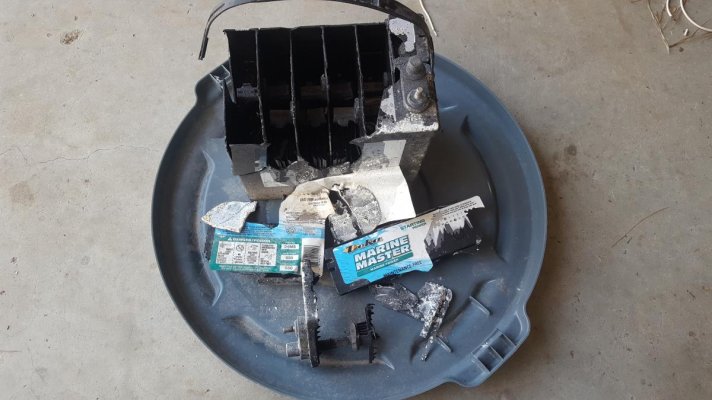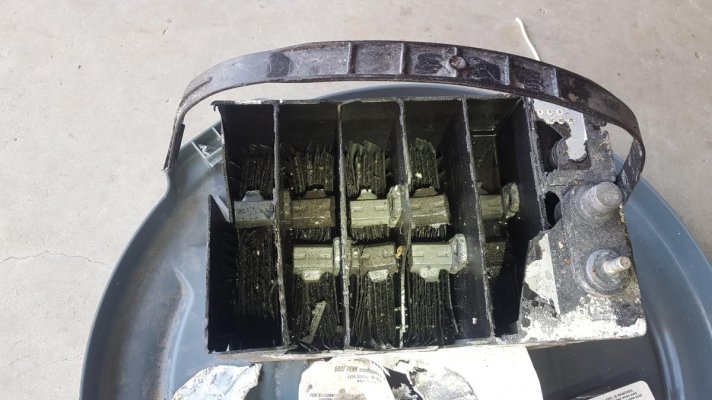....
Preheat it for 15sec, hit start and rrr-rrr-rrr-BANG!! ....
I knew the batt was a little weak as it was a grp 31 deep cycle that was becoming too weak in the boat. But it started the gennie ok (barely of late)...
It was on a battery tender....
So be careful with batteries!!
I am lucky, but still have a mess to clean up.
Third battery explosion I have been involved with in last 15yrs. Not sure I like batteries any more.
Re:
"I knew the batt was a little weak..."
The first (and nearly universal) failure mode of multi-cell batteries of any type is when
one cell goes bad. It almost never happens that all cells degrade equally at the same exact rate, so the 'end stage' of a failing battery is always the same -- single cell failure. If that cell fails 'open', the battery just stops working, neither able to accept charge or deliver. The dangerous (and more common) failure mode is when a cell fails
shorted. Now in the case of your group31 (6 x 2.1v cells), this means you no longer have a 12.6v battery, you now have a five-cell, 10.5v battery. The only initial symptom will be that the battery drops below 12.6v within a short time after charging stops. Most of the equipment hooked up to that battery (including cranking motors) will still work with a five-cell battery, but the problem is when you charge it...
Re:
"It was on a battery tender."
This is the thing that sealed this battery's fate. Your battery tender thinks it was hooked up to a 12.6v battery, but in reality it was hooked up to a 10.5v battery. That means the remaining (non-shorted) five cells were constantly being overcharged, because the battery tender is designed to charge to 13.6v, then taper off. This in turn means the remaining five cells were outgassing hydrogen at a dramatically higher rate than they should have been. A healthy battery in a well ventilated space, being charged within it's design specification will not make enough hydrogen to explode.
Re:
"Third battery explosion I have been involved with in last 15yrs."
It's very tempting to 'repurpose' batteries that have become
"a little weak".
Don't do it. Especially, don't leave them connected to a continuous charging source -- even if it's just a little one. A bigger charger would have boiled the electrolyte and sent it spewing out of the vent caps...as it was your smaller charger only provided enough current to make a lot of hydrogen.
As far as the ignition source...when battery terminal connections become loose or develop corrosion between the mating surfaces, resistance builds up slowly. Then, when you all of a sudden try to pull huge current through that resistance, a tiny spark happens and (if your five-cell battery is making lots of hydrogen), ka-boom.
This is much more common (and likely) than an internal short between plates.
Most of us have gotten behind the wheel of a car, turned the key, saw the lights come on and then at the instant you try to crank, the battery immediately goes flat dead---lights out dead. At the moment you tried to crank, that little spark fried the last remaining conductive surface contact. Then, after cleaning the terminals, you find the battery tests just fine.
re:
"Not sure I like batteries any more."
Old, weak batteries are very dangerous, which is why I get rid of them.
Glad you weren't hurt and we can all learn from this. Also, lucky that you got that battery out of your boat -- there'd have been much more damage inside your boat I think...






